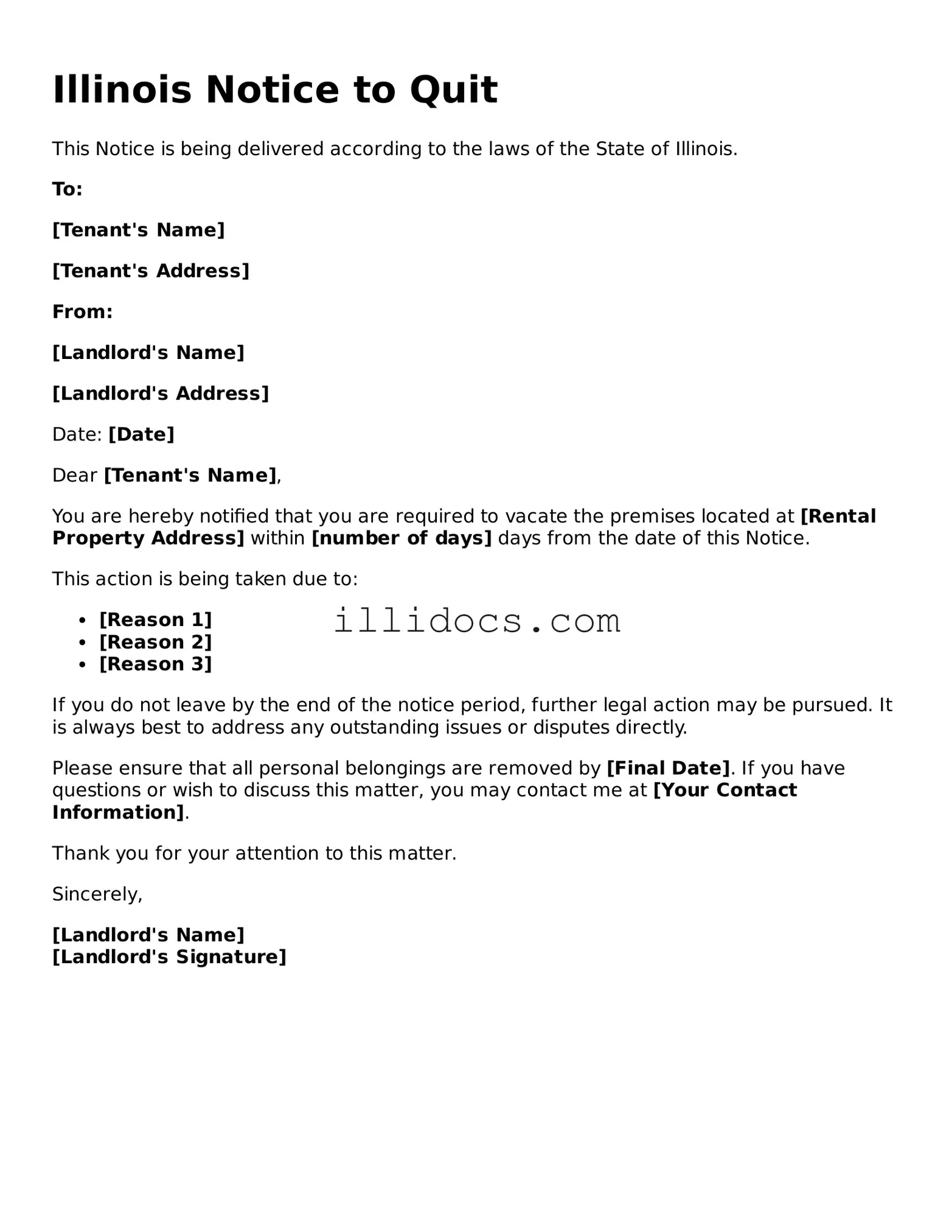What is the Illinois Notice to Quit form?
The Illinois Notice to Quit form is a legal document that a landlord uses to inform a tenant that they must vacate the rental property. This notice is typically the first step in the eviction process and can be issued for various reasons, such as non-payment of rent, lease violations, or if the lease has expired.
Who can issue a Notice to Quit in Illinois?
In Illinois, a landlord or their authorized agent can issue a Notice to Quit. It is important that the person issuing the notice has the legal right to do so, ensuring that the document is valid and enforceable.
How much notice must be given to the tenant?
The amount of notice required can vary depending on the reason for the eviction. For example, if the tenant has not paid rent, a 5-day notice is typically sufficient. For lease violations, a 10-day notice may be required. Always check local laws, as they can differ from state regulations.
What should be included in the Notice to Quit?
The Notice to Quit should clearly state the reason for the eviction, the date by which the tenant must vacate the property, and any relevant details about the lease agreement. It is also advisable to include the landlord's contact information for any questions or clarifications.
Can a tenant contest a Notice to Quit?
Yes, a tenant has the right to contest a Notice to Quit. They can respond to the notice and may choose to negotiate with the landlord or seek legal advice. If the matter escalates, the tenant can defend themselves in court if an eviction lawsuit is filed.
What happens if the tenant does not leave by the specified date?
If the tenant does not vacate the property by the date specified in the Notice to Quit, the landlord may proceed with filing an eviction lawsuit in court. The court will then determine whether the eviction is justified based on the circumstances and the evidence presented.
Is the Notice to Quit the same as an eviction notice?
No, the Notice to Quit is not the same as an eviction notice. The Notice to Quit is a preliminary step that informs the tenant of the need to vacate. An eviction notice is issued after the tenant fails to comply with the Notice to Quit, leading to formal legal proceedings.
Where can I find a template for the Illinois Notice to Quit form?
Templates for the Illinois Notice to Quit form can be found online through various legal aid websites, local government resources, or legal document services. It is essential to ensure that the template is up to date and complies with current Illinois laws.
